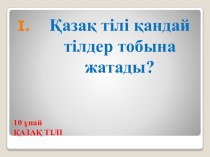Слайд 2
Overview
Pulpitis is an inflammation of the pulp. The
pulp is a spongy soft tissue of nerves and
blood vessels encased by tooth structure. In the crown, the enamel and dentine encases the pulp. When the integrity of the enamel and dentine is compromised eg through decay, the pulp is exposed to irritants. This provokes a response which you feel as a toothache.
Pulpitis may be,
Reversible – the pulp is able to heal if the irritation is removed eg by doing a filling in the case of decay
Irreversible – the pulp is unable to heal and requires pulp therapy or root canal treatment
Слайд 3
Pulpitis can occur when
Caries progresses deeply into the dentin
A
tooth requires multiple invasive procedures
Trauma disrupts the lymphatic and
blood supply to the pulp
Pulpitis is designated as
Reversible: Pulpitis begins as limited inflammation, and the tooth can be saved by a simple filling.
Irreversible: Swelling inside the rigid encasement of the dentin compromises circulation, making the pulp necrotic, which predisposes to infection.
Слайд 4
Symptoms and Signs
In reversible pulpitis, pain occurs when a stimulus

(usually cold or sweet) is applied to the tooth.
When the stimulus is removed, the pain ceases within 1 to 2 sec.
In irreversible pulpitis, pain occurs spontaneously or lingers minutes after the stimulus (usually heat) is removed. A patient may have difficulty locating the tooth from which the pain originates, even confusing the maxillary and mandibular arches (but not the left and right sides of the mouth). The pain may then cease for several days because of pulpal necrosis. When pulpal necrosis is complete, the pulp no longer responds to hot or cold but often responds to percussion. As infection develops and extends through the apical foramen, the tooth becomes exquisitely sensitive to pressure and percussion. A periapical (dentoalveolar) abscess elevates the tooth from its socket, and the tooth feels “high” when the patient bites down.
Diagnosis
Clinical evaluation
Sometimes dental x-rays
Diagnosis is based on the history and physical examination, which makes use of provoking stimuli (application of heat, cold, and/or percussion). Dentists may also use an electric pulp tester, which indicates whether the pulp is alive but not whether it is healthy. If the patient feels the small electrical charge delivered to the tooth, the pulp is alive.
X-rays help determine whether inflammation has extended beyond the tooth apex and help exclude other conditions.
Слайд 5
Treatment
Drilling and filling for reversible pulpitis
Root canal and

crown or extraction for irreversible pulpitis
Antibiotics (eg, amoxicillin) for infection
In reversible
pulpitis, pulp vitality can be maintained if the tooth is treated, usually by caries removal, and then restored.
In irreversible pulpitis, the pulpitis and its sequelae require endodontic (root canal) therapy or tooth extraction. In endodontic therapy, an opening is made in the tooth and the pulp is removed. The root canal system is thoroughly debrided, shaped, and then filled with gutta-percha. After root canal therapy, adequate healing is manifested clinically by resolution of symptoms and radiographically by bone filling in the radiolucent area at the root apex over a period of months. If patients have systemic signs of infection (eg, fever), an oral antibiotic is prescribed (amoxicillin 500 mg q 8 h; for patients allergic to penicillin, clindamycin 150 mg or 300 mg q 6 h). If symptoms persist or worsen, root canal therapy is usually repeated in case a root canal was missed, but alternative diagnoses (eg, temporomandibular disorder, occult tooth fracture, neurologic disorder) should be considered.
Very rarely, subcutaneous or mediastinal emphysema develops after compressed air or a high-speed air turbine dental drill has been used during root canal therapy or extraction. These devices can force air into the tissues around the tooth socket that dissects along fascial planes. Acute onset of jaw and cervical swelling with characteristic crepitus of the swollen skin on palpation is diagnostic. Treatment usually is not required, although prophylactic antibiotics are sometimes given.
Слайд 6
Prevention
The best way to prevent toothache is
to prevent dental disease. Decay can be prevented by,
A
sensible diet - limit snacking in between meals, and the consumption of refined carbohydrates eg sweets, cake, ice cream.
Brushing your teeth with a fluoride tooth paste twice daily
Flossing at least once a day
Regular visits to the dentist for check up.




































